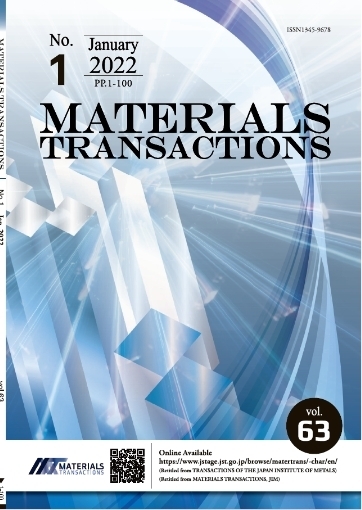Void Formation and Structure Change Induced by Heavy Ion Irradiation in GaSb and InSb
Noriko Nitta, Tokiya Hasegawa, Hidehiro Yasuda, Yoshihiko Hayashi, Toshimasa Yoshiie, Masafumi Taniwaki, Hirotaro Mori
pp. 1059-1063
抄録
Void formation and structure change by heavy ion irradiation were investigated in GaSb and InSb thin films. The voids were formed after irradiation in both materials. The average diameter of the voids was about 15 nm in GaSb and 20 nm in InSb irradiated with 60 keV Sn+ ions to a fluence of 0.25×1018 ions/m2 at room temperature. The void size in InSb is larger than that in GaSb. The large void size is quantitatively explained by the amount of induced vacancies obtained by the SRIM code simulation. The Debye-Scherrer rings were observed in the SAED patterns on both materials. The structure changes into a polycrystal by ion irradiation. Additionally, the 200 superlattice reflections in the [001] net pattern were almost absent, and the streak pattern along the ⟨110⟩ direction was observed in InSb. It is considered that the anti phase domains of different lengths are formed by ion irradiation. Ion irradiation transforms the structure of InSb from chemical ordering to chemical disordering via the formation of anti phase boundaries.
他の人はこちらも検索
MATERIALS TRANSACTIONS Vol.50(2009), No.10
MATERIALS TRANSACTIONS Vol.51(2010), No.1
MATERIALS TRANSACTIONS Vol.51(2010), No.1










